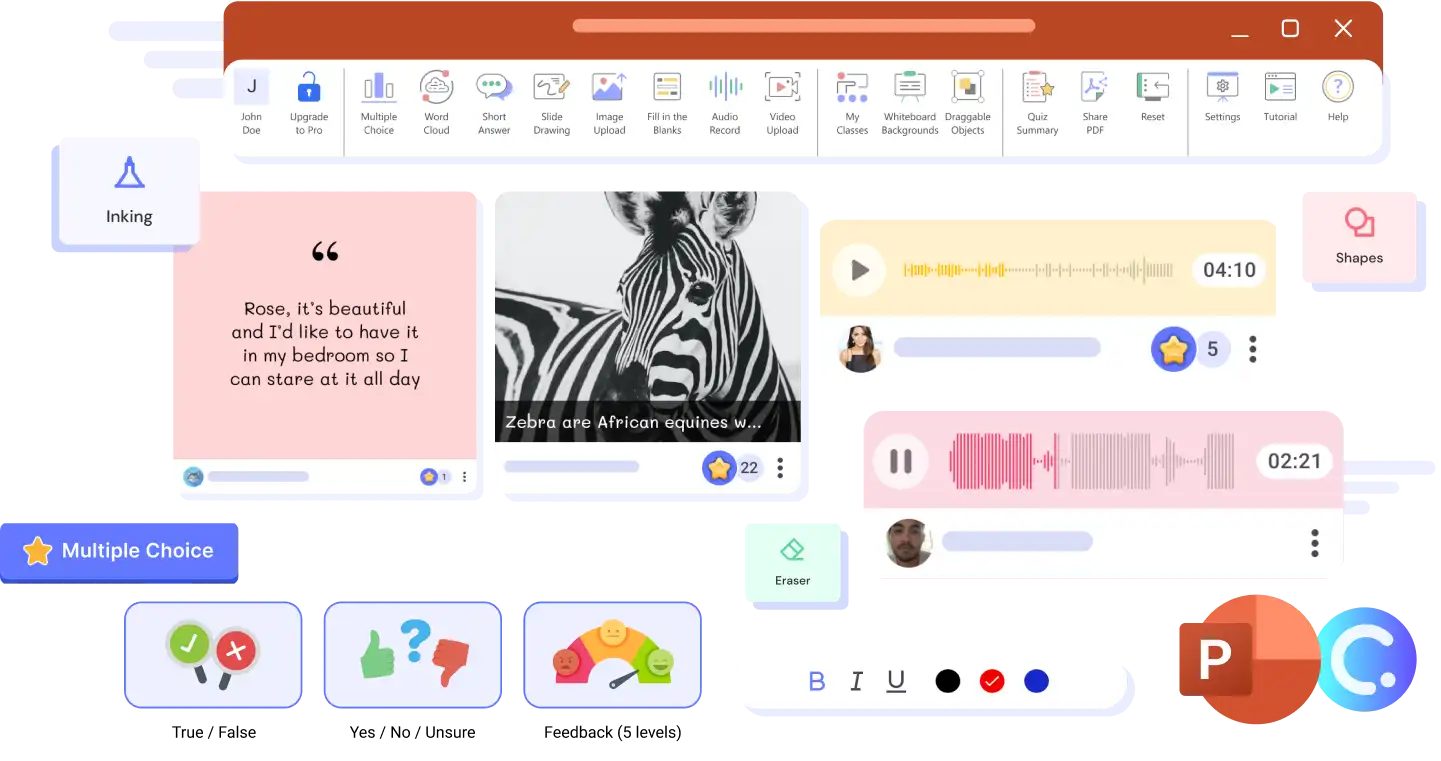Every new teacher dreams of leading a classroom where students are curious and eager to learn. The reality is often different. The first weeks can feel messy, and harder than expected.
What makes the difference is not the lesson plan or the slide design. It is how well you manage the classroom. When students know what to expect and how to act, everything else becomes easier. Without that structure, everything else will simply fall apart.
Effective classroom management strategies for new teachers are not extras you add later. They are the ground you stand on from the very first day.
In this blog, you’ll find seven strategies that show how to set the tone early and keep it steady as the year unfolds.
Before diving deeper, check out 17 Essential Tips for New Teachers to Start Strong.
1. Knowing your students’ names is golden.
A student’s name is the quickest bridge between attention and respect.
The moment you use it, you shift the classroom discussion from a vague group setting to a personal exchange. New teachers often underestimate this small detail, but it is one of the strongest classroom management strategies you can build early on.
What matters as good as memorizing their names, is knowing when to call on them. A well-timed use of a student’s name can signal to everyone that you know them and that this space is not anonymous.
✅ Acknowledge by name when starting or ending a discussion
✅ Call a name when redirecting behavior calmly
✅ Use names to celebrate a thoughtful answer
✅ Save names for private correction when needed
2. Keep students meaningfully busy.

Idle time is where most classroom management problems grow.
Students who are not engaged will find something else to do, and it rarely helps the lesson. The key is not to load them, but to design tasks that keep their minds and voices active in ways that make sense. Meaningful work is your best prevention against chaos.
These can be reflective, collaborative, or self-driven, but they all share one trait: they make students feel the work is worth doing.
- Rotate roles during discussions so no one can tune out
- Give quick prompts that ask for a personal connection to the topic
- Break big questions into smaller ones students can solve together
- Set mini-deadlines to keep momentum moving
3. Teach intentional routines.
Strong classroom management comes from habits that are taught on purpose. When you teach these routines directly, you remove confusion and make space for smoother classroom discussions.
The secret is to practice routines in more than one way. If you only show them once, students will forget. But if you layer them into different formats, they stick.
This is what separates average management from classrooms where procedures run almost on autopilot.
| Routine to Teach | Direct Way | Creative Way | Follow-Up Practice |
|---|---|---|---|
| Note-taking | Model on the board while students copy | Peer-share “best notes” challenge | Quick check of notes at the end of class |
| Group talk | Assign roles and show what each role does | Skit of “good vs. bad” group work | Rotate roles weekly so everyone practices |
| Transitions | Walk students through step-by-step | Timed “smoothest transition” game | Reflect together when it goes wrong |
4. Don’t be “overly” friendly.
Many new teachers want to win students over by being their friend. While relationships are important, students also need you to be the steady authority in the room.
Being overly casual too soon can confuse boundaries and make classroom management harder. The warmth should be there, but so should the clear line that you are the teacher, not another peer.
This balance is tricky because every group of students responds differently. Some classes thrive on humor, while others need firmer direction. The key is to establish your tone from day one and stay consistent.
“Friendly” should not equate to letting everything slide. It must be more on showing care while holding high expectations. Respect grows when both sides know the limits.
5. You’ll get mad. And that’s okay.
Even the most patient teachers feel anger at some point.
What matters is not avoiding the feeling but knowing how to manage it in the moment. If you react without control, students see the anger instead of the lesson. If you respond with calm authority, you set the tone that discussions can recover and move forward.
Critical reflection helps here. Plan how you want to respond before those moments come. That way, you can keep your authority without losing your composure.
What to do when you get mad:
- Pause before you speak so you don’t say something you regret
- Breathe slowly to signal calm, both to yourself and the students
- Redirect the behavior with clear, firm words
- Save personal conversations for private moments after class
- Reflect after the lesson and adjust how you handle it next time
6. Build leak-proof systems.
Students will always test the weak spots in your classroom management. They forget pencils, lose papers, leave laptops uncharged, or try to find loopholes in routines. If you don’t have systems in place, these small things pile up and eat into your classroom discussions.
A leak-proof classroom does not mean you solve everything for them, but that you have clear systems and tools ready so learning continues.
Technology can support these systems in powerful ways. From managing transitions to collecting quick responses, the right tools can close gaps before they widen. Instead of chasing problems, you redirect energy into discussion and learning.
👉 Synchronous Learning Tools to Power Live Classroom Lessons
👉 Classroom Technology Tools That Are Actually Worth Using
👉 Interactive Presentation Tools for Engaging Classes
👉 Online Assessment Tools Teachers Actually Use in Real Classrooms
👉 Polling Apps for Classroom Engagement and Instant Feedback
7. Don’t let positive behaviors go unnoticed.
Students quickly learn what gets attention in a classroom. If you only react to negative behaviors, those will dominate the space. But when you consistently notice and reinforce positive behaviors, you create an environment where students know exactly what you value.
The smartest approach is to make your reinforcement specific. Praise is most effective when it calls out the exact behavior you want repeated. This shifts “good job” into a clear signal that students can act on. Over time, your classroom culture grows around these habits.
| Positive Behavior | Example in Discussion | How to Reinforce |
|---|---|---|
| Active Listening | Nods, eye contact, note-taking | Acknowledge with “I see you’re engaged, that’s helping us all.” |
| Respectful Disagreement | Responds to peers without interrupting | Highlight as a model: “That’s how we challenge ideas respectfully.” |
| Thoughtful Contribution | Adds evidence or builds on a peer’s point | Praise specifically: “That example makes the discussion stronger.” |
To spark further ideas, take a look at our rundown of 20+ Effective Classroom Reward System Ideas to Boost Student Motivation.
Effective Classroom Management Strategies for New Teachers in Action
Good classroom management rests on structure and consistency.
The strategies in this guide give you a strong starting point, but carrying them out in real time while teaching can feel overwhelming. That is why having support built into the tools you already use makes such a difference.
PowerPoint is where most teachers prepare and deliver lessons. ClassPoint extends it with interactive features that help you manage routines, involve every student, and guide classroom discussions more smoothly.
Instead of juggling extra apps or losing focus when switching platforms, you stay in one place while giving students more ways to engage.

Here’s how ClassPoint can support your classroom management strategies:
- My Class organizes students by name, helping you connect with them personally and keep track of their participation.
- Interactive Quiz Questions keep students meaningfully busy with formats that demand attention and discourage side chatter.
- Live Presentation Tools like annotations, timers, and even a dedicated name picker make routines visible and easy to practice together.
- Gamification with Stars and Levels turns positive behavior into recognition that students value.
- Quick Polls give you a fast read of the room, allowing you to redirect energy before discussions lose focus.
- Student Response History helps you balance who gets heard, ensuring classroom discussions stay fair and inclusive.
